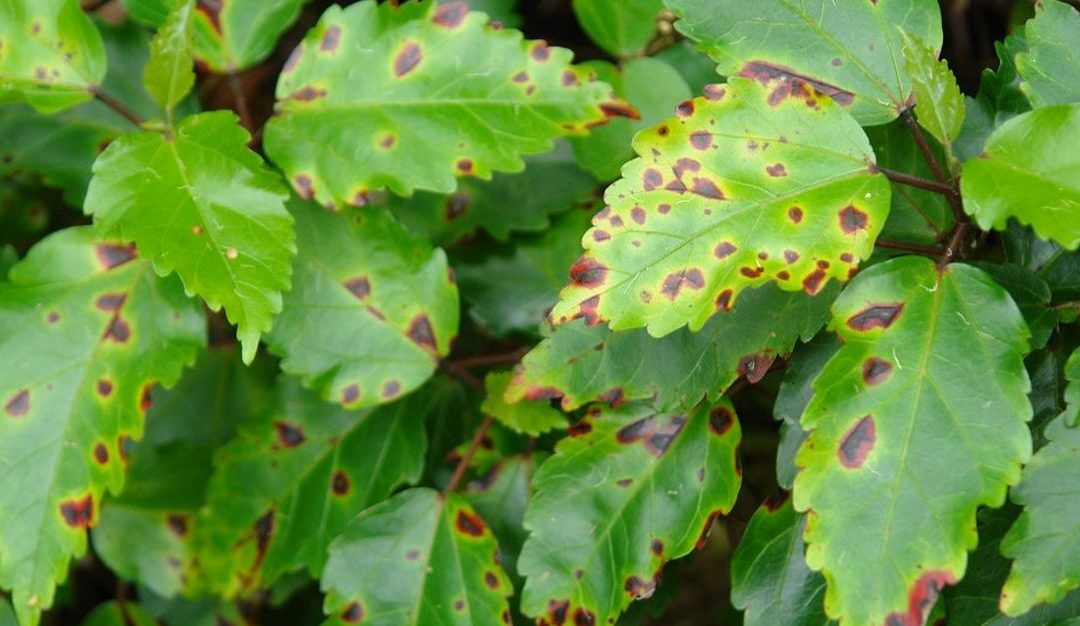Anthracnose is a fungal disease that affects crops such as tomatoes, cucumbers, melons, grapes, cherries, currants, raspberries, strawberries, and others. The causative agent of the Anthracnose Disease is a fungus of the genus Colletotrichum.
The anthracnose disease is spreading rapidly, which is facilitated by wind, rain, and insects. Weakened plants, such as those affected by mechanical damage, are at risk.
Favorable conditions for the development of Anthracnose Disease are high humidity (about 90%) combined with high air temperature (22-27°C), high soil acidity, and lack of potassium and phosphorus.
The source of the Anthracnose disease is the seeds and remains of diseased plants. Also, the pathogen fungus can live on the inner walls of the greenhouse, where the affected plant was located.
Table of Contents
- 1 What is the danger of Anthracnose Disease?
- 2 Anthracnose Disease of tomatoes
- 3 Cucumber Anthracnose Disease
- 4 Anthracnose Disease of melon (copperhead)
- 5 Grape Anthracnose Disease
- 6 Anthracnose Disease of currants and gooseberries
- 7 Strawberry Anthracnose Disease
- 8 Raspberry Anthracnose Disease
- 9 Cherry Anthracnose Disease
- 10 Conclusion
What is the danger of Anthracnose Disease?
This disease attacks all aboveground parts of the plant. The first signs usually appear on the leaves: brown spots with a dark brown border gradually grow over the rest of the aboveground organs of the plant.
Over time, the spots merge and deepen, creating obstacles to the movement of nutrients. Later, the spots have a dark purple or brown rim.
In hot weather, cracks may appear in areas affected by Anthracnose Disease, and high humidity will contribute to the fact that the stems of the plant will begin to rot. If you do not use anthracnose medications, the diseased plant will die.
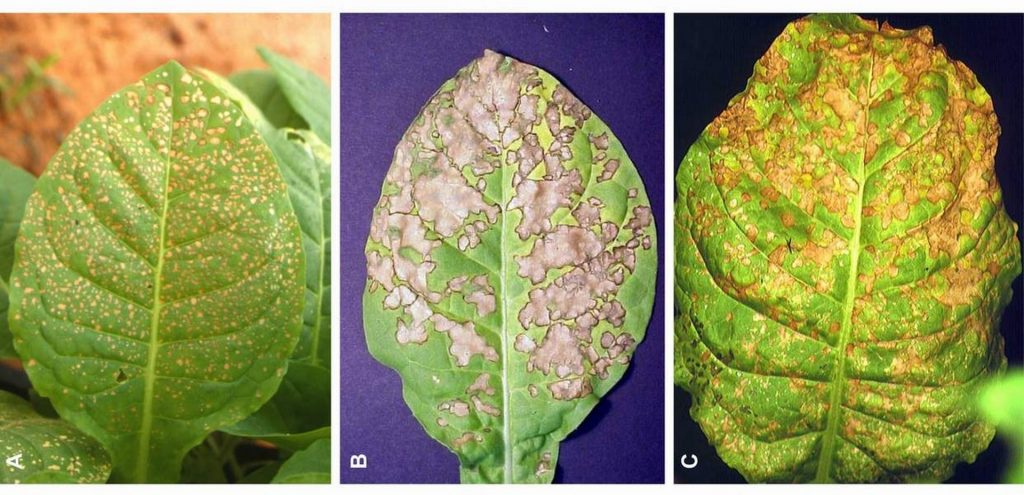
Signs of anthracnose disease and control measures
In order to diagnose the disease in time and start treatment, it is necessary to know the features of the manifestation of Anthracnose Disease in different cultures.
Anthracnose Disease of tomatoes
In tomatoes, the target for Anthracnose Disease is usually the fruit, root neck, and roots. Flaky brown spots appear on the roots, and fruits (mostly mature) are covered with round light brown spots, which subsequently darken to black.

Control measures
First of all, it is necessary to remove the affected parts of the plant. Then the tomato bushes are sprayed with copper chloride (40 g per 10 liters of water) or 1% Bordeaux liquid. Sulfur-containing preparations are also effective: Cumulus DF, colloidal sulfur, etc.
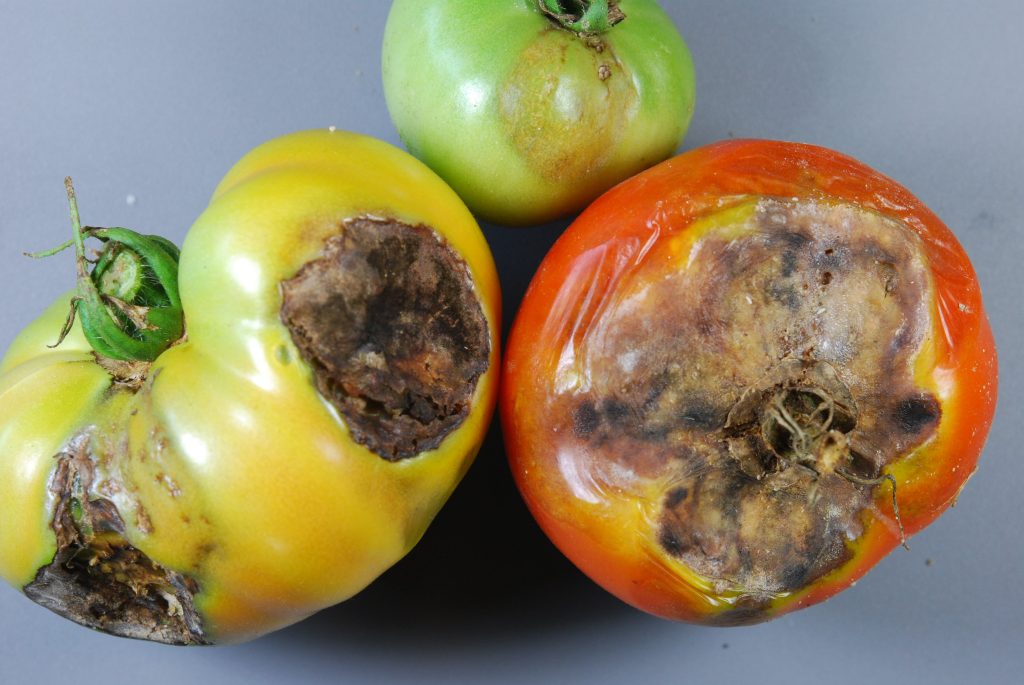
Prevention of Anthracnose Disease includes regular treatment of plants with 1% Bordeaux liquid (3-4 times a season with an interval of 10-12 days), as well as careful loosening of the soil after each watering.
After harvesting, it is necessary to disinfect the greenhouse in which tomatoes grew, paying special attention to the wooden parts of the building. For disinfection, bleach lime is suitable: 200 g is dissolved in 10 liters of water.
Cucumber Anthracnose Disease
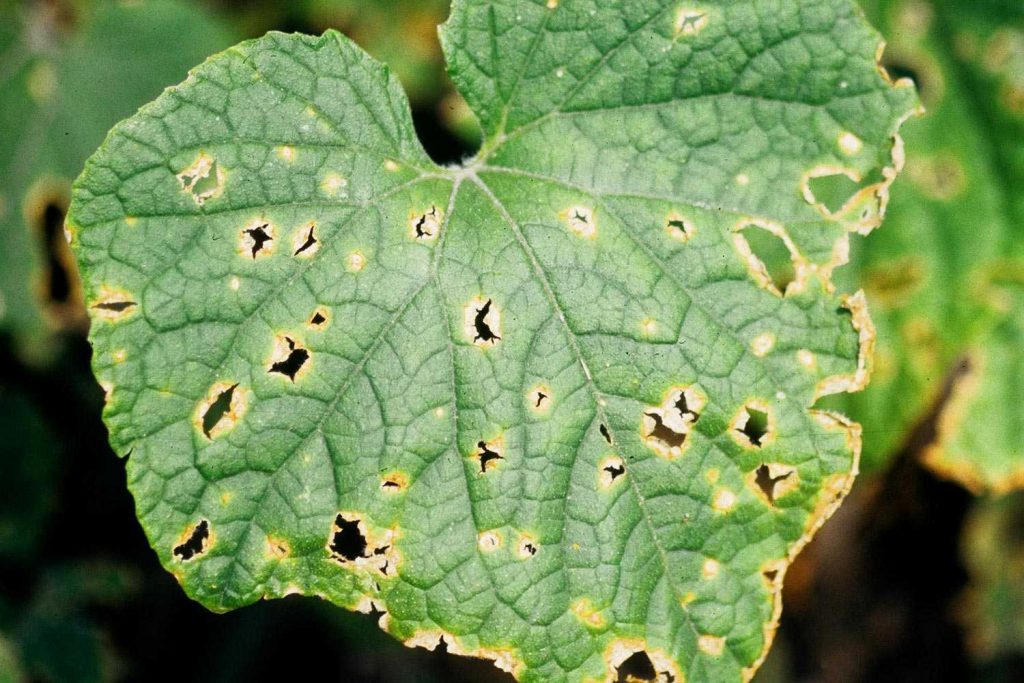
Like most crops, cucumber is susceptible to Anthracnose Disease throughout the entire growth period. In a sick plant on the leaves (most often), as well as stems and fruits, you can notice depressed rounded or elongated spots of yellowish or brown color, which later become inflamed and become ulcers.
Over time, the “infection” passes to the greens, going deeper by 3-4 mm into the plant tissue, preventing it from developing normally.
Control measures

Spraying the bushes with a 1% colloidal sulfur suspension will help. After 1-2 weeks, the treatment is repeated, spraying cucumbers with a 1% solution of Bordeaux liquid or a 0.4% solution of copper chloroxide. You can use universal fungicides, for example, Poliram DF, etc.
Anthracnose Disease of melon (copperhead)
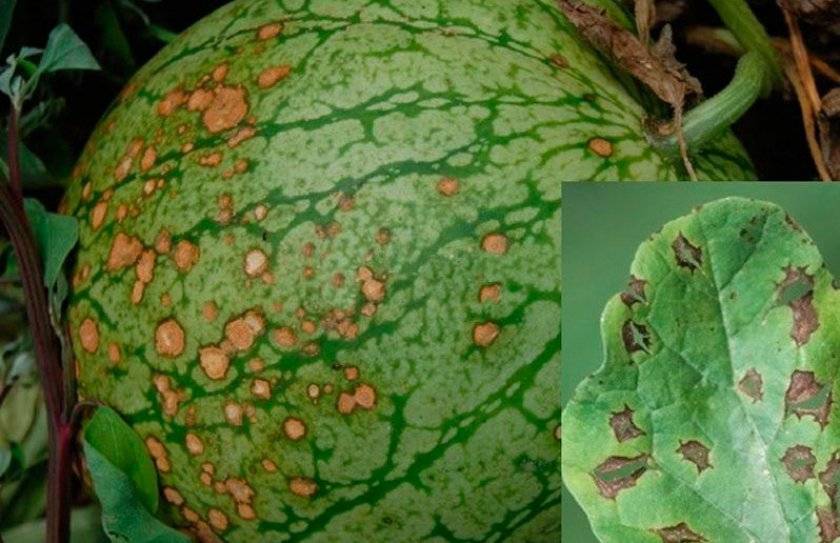
This disease, which affects both melon and watermelon, is also known as “dry copperhead”. Young plants attacked by this disease are covered with small watery spots, which eventually deepen and darken.
For old melon fruits with Anthracnose Disease, the presence of hard convex spots of a light shade is characteristic, which later become depressed and begin to rot.
Control measures
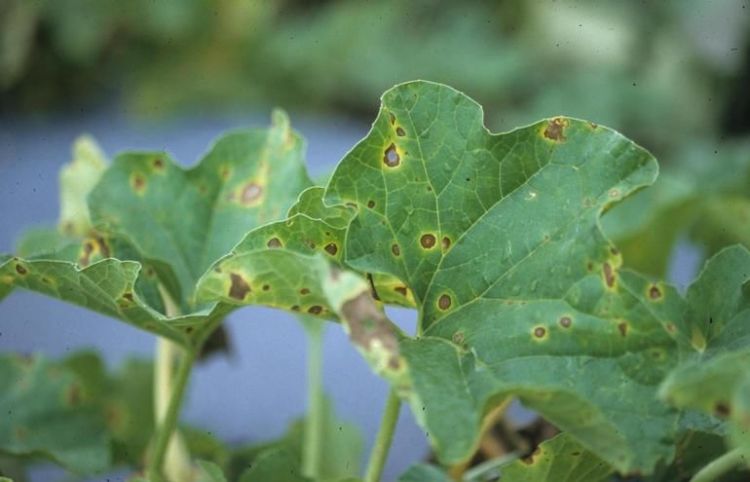
Diseased parts of plants should be removed. Spray the plants with 1% Bordeaux liquid or 0.4% Polycarbacin. Treatment of plant leaves with Phytosporin is also effective (2 treatments are carried out with an interval of 2 weeks).
After harvesting, it is necessary to burn all plant residues so that the fungus can not overwinter in them. An equally important part of the prevention of Anthracnose Disease in all crops is pre-sowing seed treatment.
Grape Anthracnose Disease
Round spots with dark edges and a lighter center appear on diseased grape leaves. After a while, the spots become darker and merge, and the leaf falls off.
When the disease passes to the stalk, the cluster begins to deform quickly, and the berries soon also fall off.
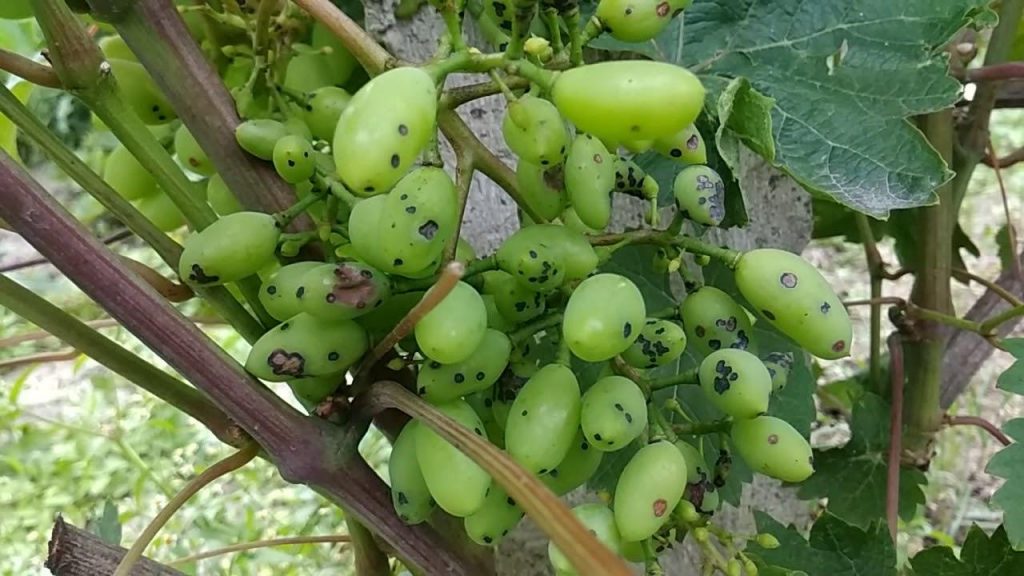
Control measures
When signs of the disease appear, the grape bushes are sprayed with 3% Bordeaux liquid or other fungicides: Previcour, Polychom, etc. The treatment is repeated after 12-14 days.
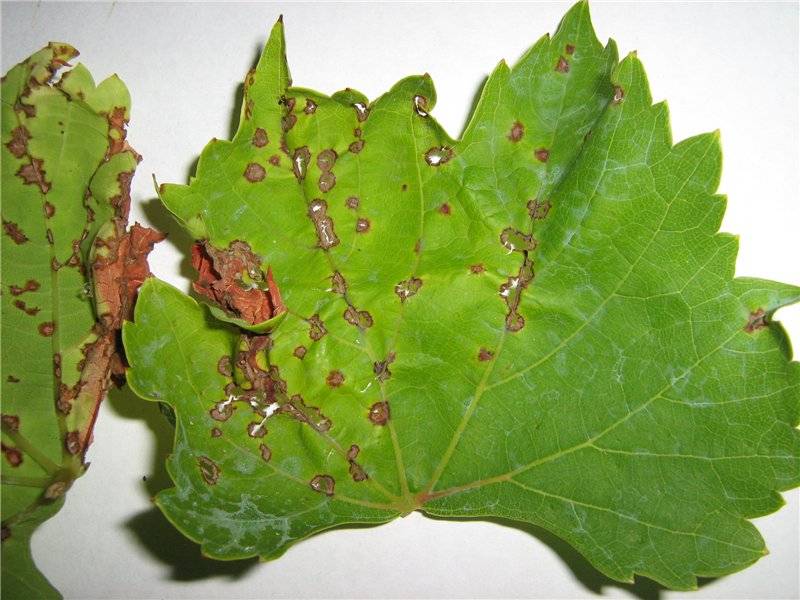
To prevent the appearance of Anthracnose Disease in the vineyard, the bushes should be treated with 1% Bordeaux liquid before flowering.
Anthracnose Disease of currants and gooseberries
In gooseberries and currants, the disease manifests itself in the same way: small reddish-brown spots form on the leaves, which later grow and merge. The leaves fall off, and the disease passes to the fruit.
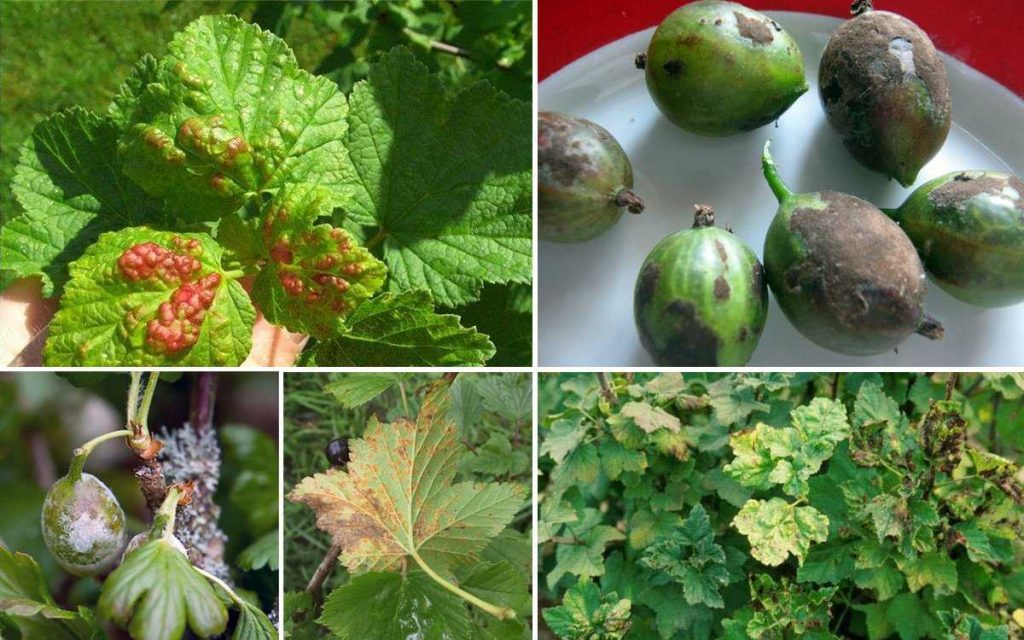
Control measures
Before the buds bloom, the bushes and the soil under them are treated with a 1% solution of Bordeaux liquid. The procedure is repeated after harvesting. Such Anthracnose remedies as Forecast, Ordan, Profit Gold, Abiga-Peak, etc. are effective.
During autumn work in the garden, the remains of infected plants (fallen branches, mulch, foliage) must be destroyed, the soil is dug up, and the bushes are sprayed with 3% Bordeaux liquid.
Strawberry Anthracnose Disease
One of the most common diseases of wild strawberries (strawberries) is Anthracnose Disease. Treatment should begin with a careful examination of the plant.
Spots appear on the whiskers and tops of young leaves. Later, the spots grow and darken, the leaves fall off, and the fruits rot.
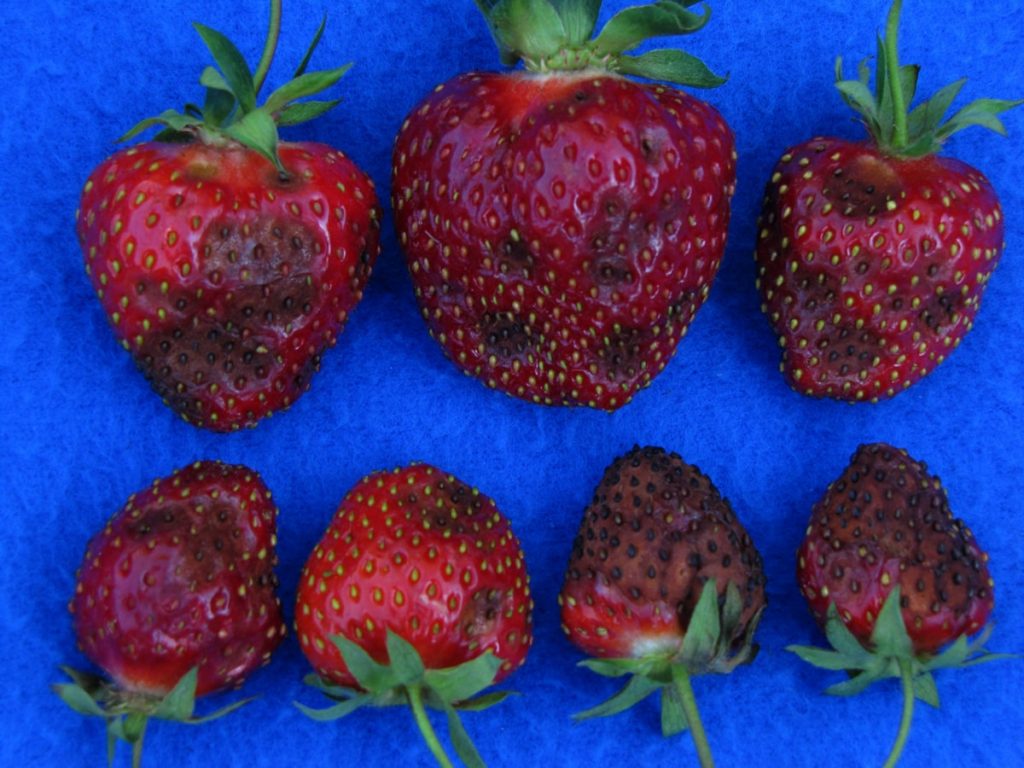
Control measures
For prevention during the flowering period and the beginning of ovary formation, bushes are treated with 3% Bordeaux liquid or preparations of Thiovit-Jet, Cumulus, etc.
If the disease has just appeared in the garden, the fungicides Metaxil, Anthracol, Quadris, etc. are suitable for processing. In later stages, spraying with 1% Bordeaux liquid will help.
Raspberry Anthracnose Disease
Small round brown spots on raspberry leaves are a cause for concern. This is how Anthracnose Disease manifests itself in this culture. Later, the spots are pressed in and darkened, and then the disease “crawls” on the stems and berries, affecting the entire plant.
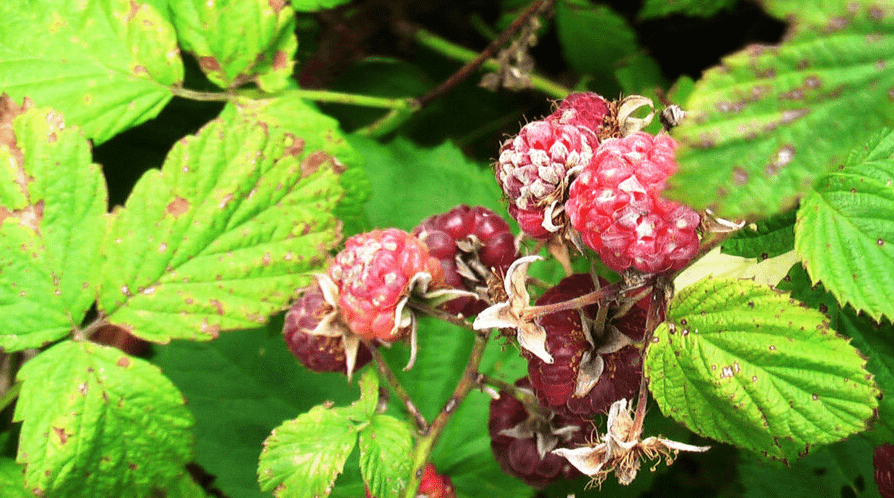
Control measures
First of all, remove the diseased bushes by cutting them with pruners at ground level (if you leave a stump, the fungus can survive in it and successfully overwinter). Fallen leaves must also be destroyed.
For prevention, at the beginning of shoot growth and before flowering, raspberry bushes are sprayed with 0.3% suspension of copper chloroxide or 0.5% suspension of Cuprosan, before flowering and after harvesting, a systemic fungicide Forecast is used.
It is important to avoid the thickening of plantings of any crop and to thin out the bushes in a timely manner.
Cherry Anthracnose Disease
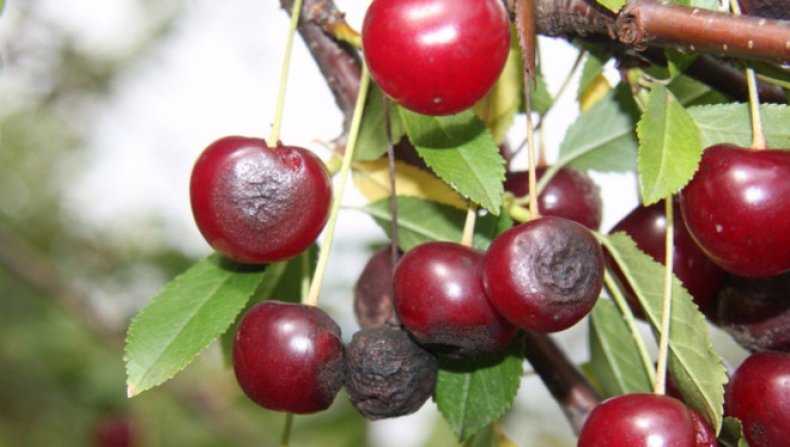
Many summer residents are increasingly complaining of Anthracnose Disease damage to cherry trees. The problem is that the signs of this disease in cherries are difficult to notice at the initial stage, and usually treatment begins too late.
Berries are covered with small dark dots, which soon grow and acquire a pinkish hue. Then the fruits dry up and fall off.
Control measures
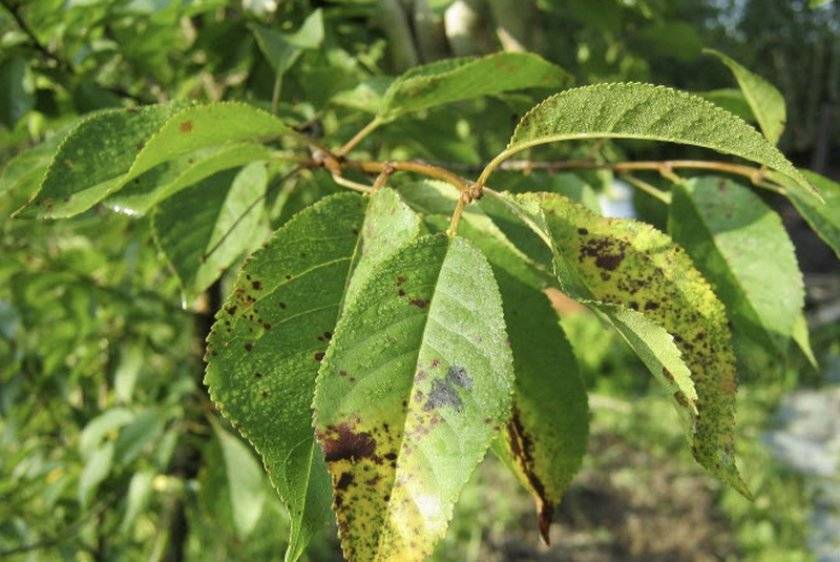
It is necessary to carry out three treatments with Poliram (20 g per 10 liters of water):
- before flowering;
- after it;
- after 2 weeks.
For prevention, trees are fed with a solution of potassium sulfate (3 tablespoons per 10 liters of water), and the trunks are bleached with lime or special bark treatment compounds (in autumn and spring).
Conclusion
Now that you know how to diagnose Anthracnose Disease and fight it, you don’t have to worry about the harvest. The main thing is to be attentive to the ” green pets “and surround them with timely care so that later you do not have to”cry at the broken trough”.

